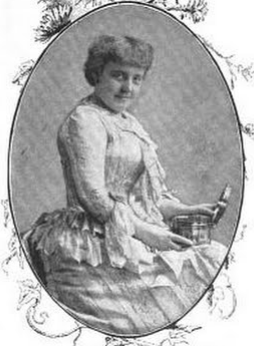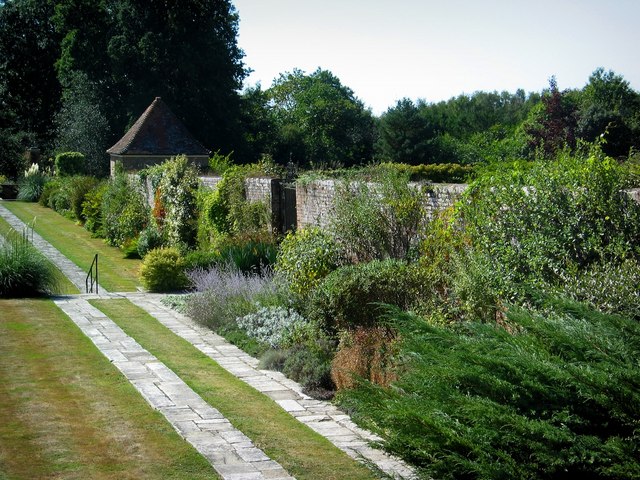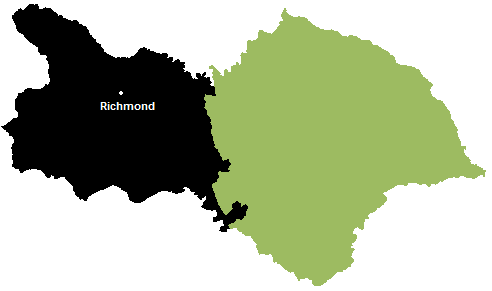|
Thwaite, North Yorkshire
Thwaite is a small village in the Yorkshire Dales, North Yorkshire, England. It is in Swaledale and is part the district of Richmondshire and the civil parish of Muker. The village lies on the B6270 road that runs through Swaledale from east to west and is west of Reeth. The name "Thwaite" comes from the Old Norse worþveit meaning 'clearing, meadow or paddock'. History The village was the home and birthplace of Richard and Cherry Kearton, who were pioneers in wildlife photography at the end of the 19th century. The Kearton name lives on in the Kearton tea rooms and guesthouse in the centre of the village and the Kearton Country Hotel. Local legend has it that the bridge over Thwaite Beck, was washed away during a fierce thunderstorm in the late 19th century. No-one was injured but a pig, that was taken by the waters, managed to climb out of the beck further downstream. A flash flood did hit the village in 1899, which resulted in the destruction of some outbuildings and garde ... [...More Info...] [...Related Items...] OR: [Wikipedia] [Google] [Baidu] |
Muker
Muker is a village and civil parish at the western end of Swaledale in North Yorkshire, England, within the district of Richmondshire. The parish includes the hamlets and villages of Angram, Keld, Thwaite, West Stonesdale and Birkdale, as well as the Tan Hill Inn, the highest in England. At the 2001 census the civil parish had a population of 309, reducing to 249 at the 2011 census. In 2015, North Yorkshire County Council estimated the population to be 260. History The earliest recorded evidence for occupation in and around Muker takes the form of a skeleton found, with flints, on Muker Common in the early 20th century. Details suggest a burial of Bronze Age date. The name of Muker is of Norse origin, derived from the Old Norse ''mjór akr'' meaning "the narrow newly cultivated field". The location at the meeting of the River Swale and the Straw Beck with plenty of good meadow land around is most likely why the Norse chose to settle here, giving them the opportunity to ... [...More Info...] [...Related Items...] OR: [Wikipedia] [Google] [Baidu] |
Pennine Way
The Pennine Way is a National Trail in England, with a small section in Scotland. The trail stretches for from Edale, in the northern Derbyshire Peak District, north through the Yorkshire Dales and Northumberland National Park and ends at Kirk Yetholm, just inside the Anglo-Scottish border, Scottish border. The path runs along the Pennines, Pennine hills, sometimes described as the "backbone of England". Although not the United Kingdom's longest National Trail (this distinction belongs to the South West Coast Path), it is according to The Ramblers "one of Britain's best known and toughest". History The path was the idea of the journalist and rambler Tom Stephenson (activist), Tom Stephenson, inspired by similar trails in the United States of America, particularly the Appalachian Trail. Stephenson proposed the concept in an article for the ''Daily Herald (UK newspaper), Daily Herald'' in 1935, and lobbied Parliament for the creation of an official trail. The walk was planned ... [...More Info...] [...Related Items...] OR: [Wikipedia] [Google] [Baidu] |
Frances Hodgson Burnett
Frances Eliza Hodgson Burnett (24 November 1849 – 29 October 1924) was a British-American novelist and playwright. She is best known for the three children's novels ''Little Lord Fauntleroy'' (published in 1885–1886), '' A Little Princess'' (1905), and '' The Secret Garden'' (1911). Frances Eliza Hodgson was born in Cheetham, Manchester, England. After her father died in 1853, when Frances was 3 years old, the family fell on straitened circumstances and in 1865 emigrated to the United States, settling in New Market, Tennessee. Frances began her remunerative writing career there at age 19 to help earn money for the family, publishing stories in magazines. In 1870, her mother died. In Knoxville, Tennessee, in 1873 she married Swan Burnett, who became a medical doctor. Their first son Lionel was born a year later. The Burnetts lived for two years in Paris, where their second son Vivian was born, before returning to the United States to live in Washington, D.C. Burnet ... [...More Info...] [...Related Items...] OR: [Wikipedia] [Google] [Baidu] |
The Secret Garden
''The Secret Garden'' is a novel by Frances Hodgson Burnett first published in book form in 1911, after serialisation in ''The American Magazine'' (November 1910 – August 1911). Set in England, it is one of Burnett's most popular novels and seen as a classic of English children's literature. Several stage and film adaptations have been made. The American edition was published by the Frederick A. Stokes Company with illustrations by Maria Louise Kirk (signed as M. L. Kirk) and the British edition by Heinemann with illustrations by Charles Heath Robinson. Plot summary At the turn of the 20th century, Mary Lennox is a neglected and unloved 10-year-old girl, born in British India to wealthy British parents who never wanted her and made an effort to ignore her. She is cared for primarily by native servants, who allow her to become spoilt, demanding and self-centred. After a cholera epidemic kills Mary's parents, the few surviving servants flee the house without Mary. She is dis ... [...More Info...] [...Related Items...] OR: [Wikipedia] [Google] [Baidu] |
King's Lynn
King's Lynn, known until 1537 as Bishop's Lynn and colloquially as Lynn, is a port and market town in the borough of King's Lynn and West Norfolk in the county of Norfolk, England. It is located north of London, north-east of Peterborough, north-north-east of Cambridge and west of Norwich. History Toponymy The etymology of King's Lynn is uncertain. The name ''Lynn'' may signify a body of water near the town – the Welsh word means a lake; but the name is plausibly of Anglo-Saxon origin, from ''lean'' meaning a tenure in fee or farm. As the 1085 Domesday Book mentions saltings at Lena (Lynn), an area of partitioned pools may have existed there at the time. Other places with Lynn in the name include Dublin, Ireland. An Dubh Linn....the Black Pool. The presence of salt, which was relatively rare and expensive in the early medieval period, may have added to the interest of Herbert de Losinga and other prominent Normans in the modest parish. The town was named ''Len '' (Bis ... [...More Info...] [...Related Items...] OR: [Wikipedia] [Google] [Baidu] |
George Medal
The George Medal (GM), instituted on 24 September 1940 by King George VI,''British Gallantry Medals'' (Abbott and Tamplin), p. 138 is a decoration of the United Kingdom and Commonwealth, awarded for gallantry, typically by civilians, or in circumstances where military honours are not appropriate. History In 1940, at the height of the Blitz, there was a strong desire to reward many acts of civilian courage. Existing awards open to civilians were not considered suitable to meet the new situation, so the George Cross and the George Medal were instituted to recognise civilian gallantry in the face of enemy bombing, and brave deeds more generally. Announcing the new awards, the King said The warrant for the GM (along with that of the GC), dated 24 January 1941, was published in ''The London Gazette'' on 31 January 1941. Criteria The medal is granted in recognition of "acts of great bravery". The original warrant for the George Medal did not explicitly permit it to be awarded pos ... [...More Info...] [...Related Items...] OR: [Wikipedia] [Google] [Baidu] |
Great Shunner Fell
Great Shunner Fell is the third highest mountain in the Yorkshire Dales, North Yorkshire, England, and the highest point in Wensleydale; at 716 metres above sea level. In clear weather the summit affords views of Wensleydale to the south, Ribblesdale to the south west and Swaledale to the north, as well as views into Cumbria and County Durham beyond the A66. The Pennine Way passes over its summit, on the way from Hawes to Keld. The popularity of this route had eroded vegetation from a strip 70 m wide across the moor, which has been alleviated since 1996 by the construction of a path made of flagstones. The summit holds a cross-shaped windbreak of which the triangulation pillar has been built into the northern 'arm'. Great Sleddale Beck, which becomes the River Swale after its confluence with Birkdale Beck has its sources on the northern slopes of Great Shunner Fell, while the southern slopes drain into the River Ure and Wensleydale. The dominating rock type in th ... [...More Info...] [...Related Items...] OR: [Wikipedia] [Google] [Baidu] |
Handley Page Halifax
The Handley Page Halifax is a British Royal Air Force (RAF) four-engined heavy bomber of the Second World War. It was developed by Handley Page to the same specification as the contemporary twin-engine Avro Manchester. The Halifax has its origins in the twin-engine ''HP56'' proposal of the late 1930s, produced in response to the British Air Ministry's Specification P.13/36 for a capable medium bomber for "world-wide use." The HP56 was ordered as a backup to the Avro 679, both aircraft being designed to use the underperforming Rolls-Royce Vulture engine. The Handley Page design was altered at the Ministry to a four-engine arrangement powered by the Rolls-Royce Merlin engine; the rival Avro 679 was produced as the twin-engine Avro Manchester which, while regarded as unsuccessful mainly due to the Vulture engine, was a direct predecessor of the famed Avro Lancaster. Both the Lancaster and the Halifax emerged as capable four-engined strategic bombers, thousands of which were bu ... [...More Info...] [...Related Items...] OR: [Wikipedia] [Google] [Baidu] |
Coast To Coast Walk
The Coast to Coast Walk is a long-distance footpath between the west and east coasts of Northern England, nominally long. Devised by Alfred Wainwright, it passes through three contrasting national parks: the Lake District National Park, the Yorkshire Dales National Park, and the North York Moors National Park. The current actual measured distance is reported as . Wainwright recommends that walkers dip their booted feet in the Irish Sea at St Bees and, at the end of the walk, in the North Sea at Robin Hood's Bay. It has been an unofficial and mostly unsignposted trail. However on 12 August 2022 it was announced that the Coast to Coast Walk would become an official National Trail, following a successful campaign by the Wainwright Society (the official Responsible Organisation for the trail). Work will commence to upgrade the route and officially open it in 2025 (at long). History and status The Coast to Coast was originally described by Alfred Wainwright in his 1973 boo ... [...More Info...] [...Related Items...] OR: [Wikipedia] [Google] [Baidu] |
Richmondshire
{{Infobox settlement , name = Richmondshire District , type = District , image_skyline = , imagesize = , image_caption = , image_blank_emblem= Richmondshire arms.png , blank_emblem_type = Coat of arms , image_map = Richmondshire UK locator map.svg , map_caption = Shown within North Yorkshire , mapsize = frameless , subdivision_type = Sovereign state , subdivision_name = United Kingdom , subdivision_type1 = Constituent country , subdivision_name1 = England , subdivision_type2 = Region , subdivision_name2 = Yorkshire and the Humber , subdivision_type3 = Administrative county , subdivision_name3 = North Yorkshire , seat_type = Admin. HQ , seat = Richmond , government_type = Richmondshire District Council , leader_title = Leadership: , leader_name = Alternative – Sec.31 , leader_title1 = Executive: , leader_name1 = {{English district contr ... [...More Info...] [...Related Items...] OR: [Wikipedia] [Google] [Baidu] |
Cherry Kearton
Richard Kearton FZS, FRPS (2 January 1862 – 8 February 1928) and Cherry Kearton (8 July 1871 – 27 September 1940), brothers, were a pair of British naturalists and some of the world's earliest wildlife photographers. They developed innovative methods to photograph animals in the wild and, in 1895, published the first natural history book to be entirely illustrated by wild photographs. Richard was made a Fellow of the Zoological Society of London and Royal Photographic Society. Cherry later became a wildlife and news filmmaker, and friend to Theodore Roosevelt. The Royal Geographical Society created the Cherry Kearton Medal and Award in his honour. Biographies Richard and Cherry were born in the village of Thwaite, North Riding of Yorkshire, England, the second and fourth sons of parents Mary and John Kearton. Their father was a yeoman farmer. The brothers were educated in Muker and Richard was a farmer in Swaledale, Yorkshire, until 1882, then manager of a publicity dep ... [...More Info...] [...Related Items...] OR: [Wikipedia] [Google] [Baidu] |








_(cropped).jpg)